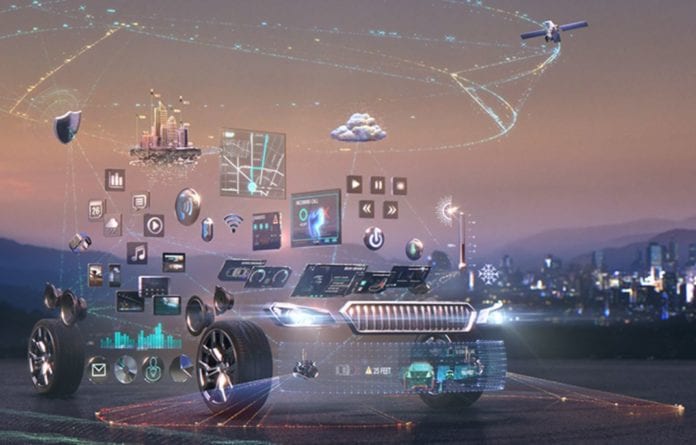Tier-one automotive supplier Harman sits in a unique place in the connected car ecosystem, and the company is preparing for more demand in cybersecurity, infotainment systems and over-the-air software update features in the coming year – and even starting to offer augmented reality for the connected car.
Harman is in the process of being acquired by Samsung in one of the largest connected car-related acquisitions of the year. Among its partners and collaborators on connected car technologies, the company counts companies such as NXP (in the process of being acquired by Qualcomm), SoftBank, AT&T and Airbiquity.
During Harman’s November call with investors, company chairman, president and CEO Dinesh Paliwal said Harman has been racking up customer wins around the world, “including orders for high-end, fully embedded compute platforms to entry level display audio systems covering wide spectrum of offerings. We are seeing growing demand from our customers for our expanded portfolio of connected car solutions, including telematics, cybersecurity, over-the-air updates and advanced safety features.”
Harman earlier this year acquired TowerSec, a company focused on network-based protection for connected vehicles, in a move to broaden its security offerings. Harman also recently launched what it says is the first end-to-end, “automotive grade” intrusion detection system, in collaboration with Airbiquity.
“Car hacking is a very real threat that will continue to increase as we move towards greater connectivity and autonomous vehicles, with more and more new technologies becoming part of the ‘internet of things,'” said Saar Dickman, VP of automotive cybersecurity at Harman, in a statement on the new solution.
The ability to offer software updates over the air continues to pick up speed as well. Paliwal said more than 1 million vehicles on the road are using the company’s over-the-air services, and the company had a more than $150 million software order backlog for its OTA offering, half of which was in the automotive space.
“The car is getting an upgrade as never seen before,” Paliwal said, going on to add that not only will embedded system offerings be key for semi-autonomous and autonomous driving, but that most industry observers expect the market for embedded infotainment systems will be about 60% to 65% of the market within four to five years.
Paliwal also said Harman is preparing for more car-sharing and support for multiple mobile device operating systems, rather than offering consumers a choice between Apple, Google or other operating systems.
“If you think about shared [vehicle] economy, you cannot design a car just for CarPlay or just for Baidu or just for Google. So, we’ll implement all kind of smart apps, so you have a choice – whatever you want to bring in,” Paliwal said. “I will not name the customer, but we are developing a very large program right now which is designed for four different types of phone to operate at the same time, which is going to be [a] first in the industry.”
Harman also recently announced that through a strategic investment in Silicon Valley company Navdy, it will be offering an aftermarket automotive augmented reality product. Called “Navdy with Harman,” the new offering will be available in January and, as Harman describes it, provides “the world’s first aftermarket heads-up driving device that projects both mobile application information and car data information directly over the road. … The aftermarket HUD solution leverages [augmented reality] technology to project car, phone and music information directly in the driver’s line of sight, creating a new type of driving experience that is both safe and satisfying.”
Looking for more information on connected car trends and related services? Check out RCR Wireless News’ free special report.

